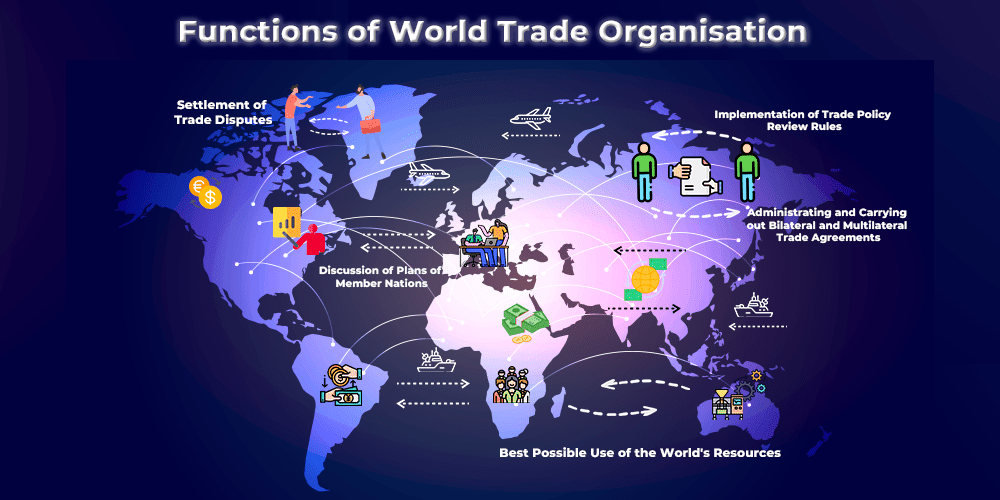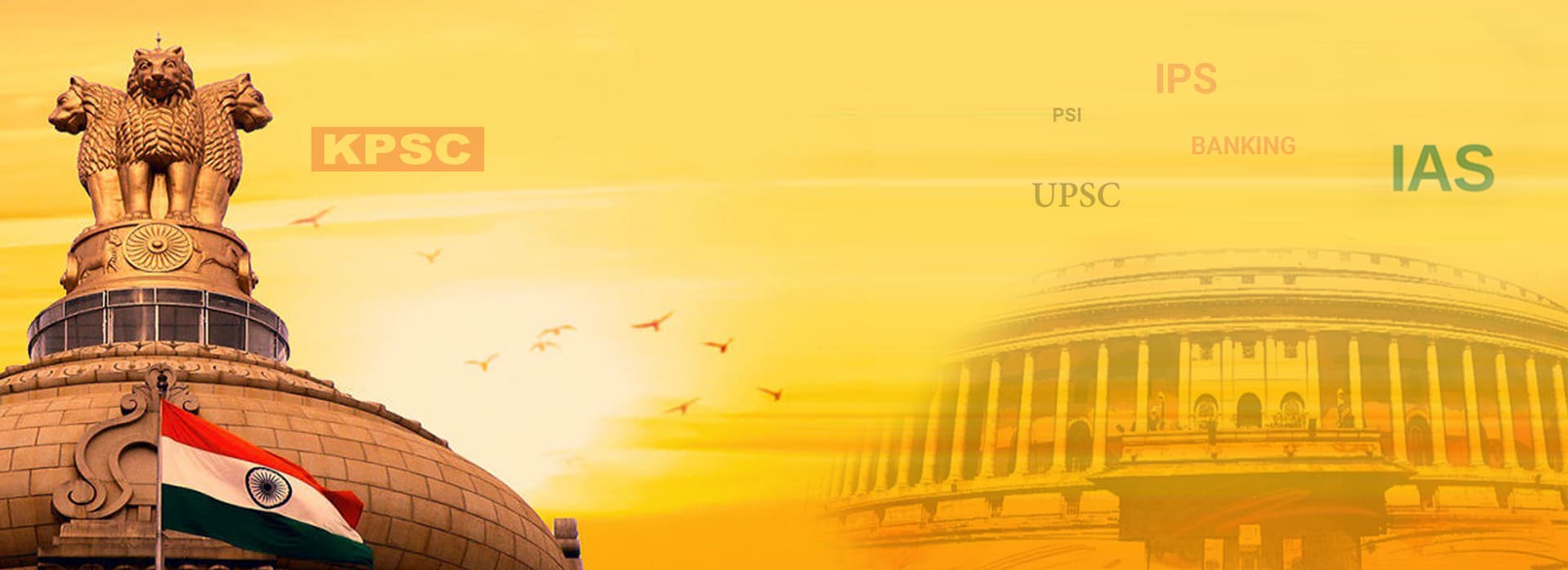Is the World Trade Organization Losing Global Relevance?
Syllabus:
GS-2:
Bilateral Groupings & Agreements , Important International Institutions , Groupings & Agreements Involving India and/or Affecting India’s Interests , Deglobalisation & Protectionism
Focus:
The WTO faces a crisis of credibility with its dispute settlement mechanism paralyzed, negotiations stalled since the Doha Round, and rising unilateralism by major economies like the U.S. and China. The increasing shift towards bilateral trade deals and protectionist policies raises concerns about the WTO’s relevance in global trade governance.

Understanding the Role and Relevance of the WTO:
a. Original Purpose and Functions of the WTO
- The World Trade Organization (WTO) was established to promote rules-based global trade.
- Its three core functions:
- Negotiating trade agreements
Dispute Settlement Mechanism (DSM)
- Trade monitoring
- Negotiating trade agreements
- It was expected to function as a neutral multilateral platform for resolving trade issues.
b. Present State of WTO
- Experts argue the WTO has become increasingly irrelevant.
- Since the Doha Round (2001), negotiations have stalled, with only one incomplete fisheries agreement.
- The Appellate Body has been dysfunctional, especially due to the U.S. blockade on appointments.
- Trade monitoring suffers from opacity and non-compliance by several major members.
Challenges Weakening the WTO Framework:
a. Dysfunctional Dispute Settlement Mechanism
- The WTO’s DSM, once globally respected, is now non-functional.
- The U.S. began blocking judge appointments under Barack Obama, intensified under Donald Trump.
- Many members now prefer bilateral arbitration over the WTO DSM.
b. Collapse of Consensus-Based Decision-Making
- The WTO follows a consensus-based approach, which now acts as a barrier to reform.
- Efforts to shift towards voting-based decisions were opposed by India and the U.S..
- Proposals like the EU’s arbitration model have failed to gain universal support.
c. Rise of Protectionism and Bilateralism
- Policies like “America First” tariffs mirror 1930s protectionism.
- The U.S. uses Section 232 (steel & aluminium tariffs) and Section 301 (China-specific tariffs).
- Free Trade Agreements (FTAs) have become the preferred tool over Most Favoured Nation (MFN) principles.
Major Global Grievances with WTO’s Structure:
a. U.S. Discontent and Strategic Shift
- The U.S. claims it disproportionately liberalized tariffs, expecting reciprocity from others.
- Continued discontent has led to reduced engagement, even under President Biden.
- Dissatisfaction with WTO’s “overreach” in interpreting rules is also cited.
b. China’s Controversial Role
- China’s WTO accession raised hopes but resulted in trade distortion due to:
- Excess capacity in key sectors like steel and cement
- Limited domestic market access
- Excess capacity in key sectors like steel and cement
- WTO rules failed to anticipate non-violative but distorting practices.
c. India’s Position and Domestic Constraints
- India faces domestic political sensitivity, especially in agriculture:
- Restricted to 10% subsidies while developed nations continue heavy subsidization.
- Restricted to 10% subsidies while developed nations continue heavy subsidization.
- India opposes environmental and labour standards at WTO, but discusses them bilaterally.
- India’s resistance to some talks contributed to negotiation breakdowns.
Implications of WTO’s Decline
a. Erosion of MFN Principle
- MFN (Article 1) requires equal trade treatment among WTO members.
- Rise of FTAs has led to fragmentation of the MFN system.
- The U.S. is now preferring bilateral negotiations, bypassing WTO norms.
b. Risks to Global Economic Stability
- WTO is unable to prevent or manage global trade crises.
- This creates:
- Trade wars
Investor uncertainty
- Instability in developing nations
- Trade wars
c. Decline in Monitoring and Enforcement
- Trade monitoring suffers due to non-reporting and lack of enforcement.
- Members, especially major economies, are not held accountable for trade measures.
The Road Ahead: Reform or Replacement?
a. Reform Needs and Barriers
- Structural reforms are crucial to restore WTO’s credibility:
- Rethink consensus-based decision-making
Revamp the DSM
- Improve transparency and monitoring
- Rethink consensus-based decision-making
b. Role of Major Players in Reform
- U.S., China, and EU must take lead in reform negotiations.
- India and other developing nations should engage constructively.
- Sensitivities like agriculture and digital trade need nuanced handling.
c. Multilateralism vs. Bilateralism
- Bilateralism is weakening multilateral institutions.
- WTO’s revival is essential for:
- Equity in global trade
Predictability
- Conflict resolution
- Equity in global trade
- A reformed WTO can protect small and developing countries from trade imbalances.
Conclusion :
The WTO’s decline poses serious challenges to multilateralism, especially for developing economies. Urgent reforms in its structure, decision-making process, and dispute mechanism are essential. A revitalized WTO remains crucial to ensure a rules-based global trade order, address emerging trade issues, and prevent a shift towards economic unilateralism.
Mains Practice Question :
Discuss the challenges faced by the World Trade Organization in fulfilling its mandate amid growing unilateralism and protectionism. How can reforms in its decision-making, dispute resolution, and negotiation functions restore its credibility as a global trade institution? Suggest a balanced approach for India in navigating WTO reforms.






